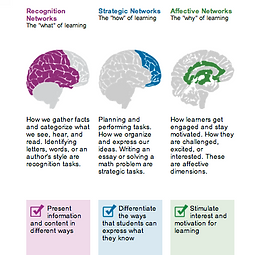
Special Education
ICT'S
- Consistent with the Universal Design for Learning
Using ICT's for Literacy and Numeracy in a Special Education
Classroom incoorporates the flexibility aspect of the UDL. For
more information, visit the ACU Website.
Literacy & Numeracy Engagement
Literacy: Providing digital texts
- A Multi-literacy approach, according to The New London Group.
Designs of Meaning
Available Designs: Resources for meaning; Available Designs of meaning
Designing: The work performed on/with Available Designs in the
semiotic process
The Redesigned: The resources that are reproduced and transformed
- Higher engagement in Literacy- as shown by Maryborough State School Special Education Unit
Maryborough State School experimented in their Year four Special Education Unit giving students the opportunity to create E-Newsletters. Their literacies dramatically increased and more importantly, they were ENGAGED.
Click on the picture for a link to the
article
Numeracy: Interactive Whiteboards
- Provides a multi-sensory approach to Numeracy learning. Engaging more areas of the brain is essential in Numeracy learning. Click here for a link to the article You Fill up their Senses by TES.
Social Skills Training & Proficiency
Audiovisual:
- Cari Parr, a Special Education teacher in Tenessee uses the program Xtranormal (an online video animation program), to create videos explicitly teaching students social skills. She says using audio-visuals in the classroom has benefited her students greatly:
“My kids don’t always feel comfortable talking to adults or even real people sometimes. I knew if I found something they could latch on to, it might make a difference. They’re so drawn to the Xtranormal characters I’ve created,” Parr explains. “I’m putting good dialogue into their brains that will help them outside the classroom. My students remembered every word the robot characters said! It usually takes three to four days of repetition to get an idea to stick with my students. With Xtranormal videos it only takes one to two days!” click here for the original article
- Studies have shown that the use of video conferencing can also aid students with special needs in their social and communicative skills. A study was done in 1998 by Richard Thorpe and has been published on the Journal of Information Technology for Education. The study observed a group of students with special needs who participated in social interactions through desktop video conferencing with other special needs students in different areas. The results showed that the use of the video was a stronger motivator, more structured, students felt less distracted and felt less fear in interacting through a video then in a normal classroom environment. One of the supervising teachers said this:
".....This distance between the speaker and the listener is helpful because I don't think the pupils feel threatened by it. I think they feel more relaxed and uninhibited...from the children with special needs point of view, it's very helpful."
Assistive Technology: Visual Impairments
Laptops, braille displays, screen enlargers:
- Assistive technology benefit students with visual impairments, as it bridges the gap between the restrictions of their sight and engagement and being communicated information. The UDL characteristics that are employed for this is equity and perceptible information.(ACU Website.)
Autism
The iPad
- Please watch the following YouTube Clip about a mother of a child with Autism who studied the benefits iPad's had her child, and numerous other children on the Autism Spectrum:
"Technology is good because it's static, it doesn't change. That is so important for the Autism Community."
Reasons for ICT Integration


